What Type Of Animals Live In Canyons
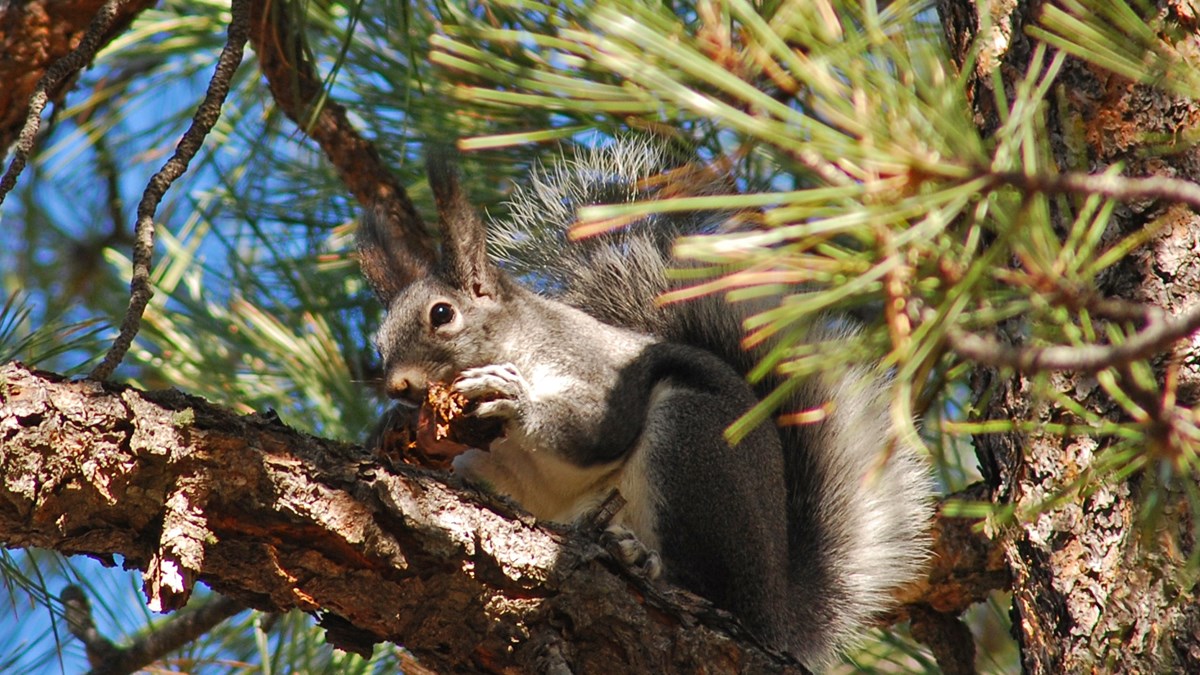
NPS
Over 90 species of mammals call Grand Canyon National Park home, giving this park higher mammalian species diversity than Yellowstone. From the largest state fauna in North America to some of the highest bat species diversity in the United States, Grand Canyon is habitation to a far larger mammalian population than many people think. Most visitors to the park see mule deer, elk, and squirrels, but many of Grand Coulee's mammals are secretive or nocturnal and motion effectually unnoticed.
Select a Park:
Select a Species Category (optional):
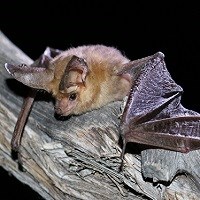
NPS Eric Hope
Bats
G Coulee National Park is home to one of the highest bat diversities anywhere in the United states, providing habitat to 22 species of bats. Many bats in the park consume insects, with the Little Brownish Bat (Myotis lucifugus) capable of eating 1,200 mosquito-sized insects an 60 minutes. Others feed on fish and yet others consume the nectar of fruit producing plants-helping to pollinate the plants.
Notwithstanding, a fatal disease has started to infect these creatures beyond the country. White-Nose Syndrome has not reached Arizona but is probable in the next few years. Although it'south unlikely y'all'll meet all of Grand Canyon's bat species during your visit, look into the evening and night skies to view the only mammals capable of true flight.
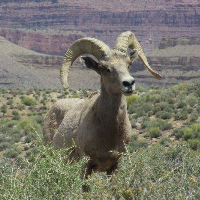
NPS
Bighorn Sheep
Ane of the largest and near charismatic of G Canyon National Park's wildlife is the desert bighorn sheep.
- This species is the largest native animal in the park with males weighing up to 300 lbs (135 kg), though two nonnative species living in the park, bison and elk are larger.
- Though bighorn are by and large associated with mountainous terrain, the unique mural institute in the 1000 Canyon provide first-class habitat dissimilar whatsoever other on globe. The canyons accept provided remote refuges for these animals and this is the but non-reintroduced population of desert bighorn.
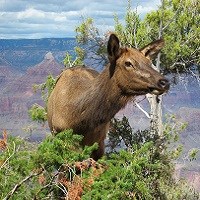
NPS Eric Hope
Elk
Elk (Cevus elaphus) are the largest member of the deer family (Cervidae) in K Canyon National Park.
- The Rocky mountain elk (Cervus elaphus nelsoni) in the park come from 303 individuals introduced to the state from 1913-1928 from Yellowstone National Park.
- While they tin can appear calm, elk are wild animals that tin can be unsafe. Please view these animals from at to the lowest degree 100 anxiety.
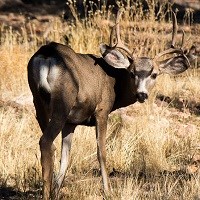
NPS Eric Promise
Mule Deer
Mule deer (Odocoileus hemionus) are very common throughout western North America, and are ane of the well-nigh commonly seen animals in Grand Canyon National Park.
- Their large ears resemble those of mules - hence the name.
- They accept a narrow tail which distinguishes them from white-tailed deer (Which are common in the United states of america, just non found in Grand Canyon National Park).
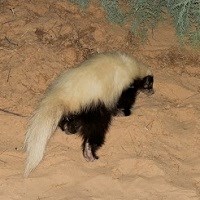
NPS Jen Hiebert
Pig-nosed Skunk
The Chiliad Coulee is home to i of the world's largest species of skunk, the American hog-nosed skunk (Conepatus leuconotus).
The park is due north of the species' known range, merely two skunks were reported past river trips on the Colorado River in 2014. It is unknown whether the species has been overlooked in the Chiliad Canyon in the past, or if information technology has expanded its range northwest.
These sightings propose a breeding population on both sides of the river. Park biologists are beginning a study of the distribution and presence of hog-nosed skunks in the canyon.
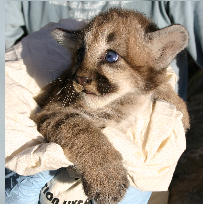
NPS
Mountain King of beasts
Mountain lions (Puma concolor) are the largest predators found in the K Coulee.
In that location are 18 native South American, 25 native North American, and 40 English names for this species, and the most common are puma, cougar, panther, and catamount.
Humans in Grand Canyon accept no reason to fear mountain lions because they do not see humans equally casualty. For mountain lions, being hit by cars is a common cause of expiry. Delight use caution when driving, specially on East Rim Bulldoze.
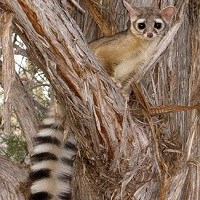
NPS
Ringtail
This minor mammal, often chosen a ringtail cat, miner's cat, or bassarisk, is Arizona'southward land mammal. It is a common, albeit rarely-seen fellow member of Thou Canyon's fauna. The musky scent they excrete deters would be predators such as foxes, coyotes, and bobcats.
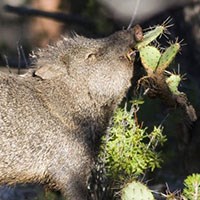
NPS Photo
Javelina
Javelina are known past many names: collared peccary and musk hog are commonly used. Javelina young are sometimes called reds because of the color their fur at that stage. No matter what yous call them, javelinas are not pigs. They are even so, hoofed mammals that look quite like pigs. Ancestors of today'south javelinas made the journey, over the Bering land-bridge, somewhen to Cardinal and South America.
Source: https://www.nps.gov/grca/learn/nature/mammals.htm
Posted by: foltzguith1992.blogspot.com

0 Response to "What Type Of Animals Live In Canyons"
Post a Comment